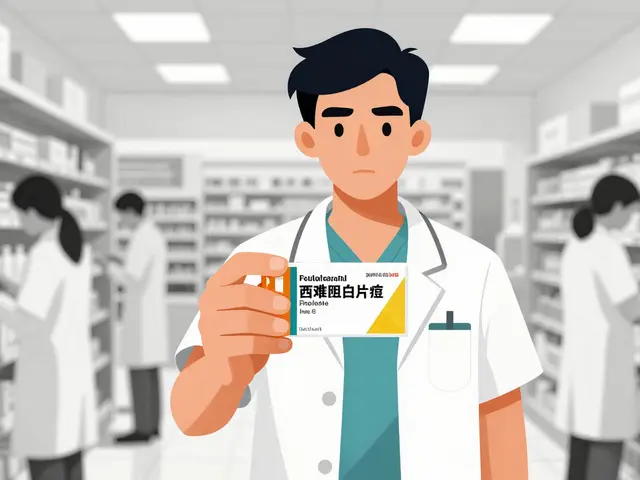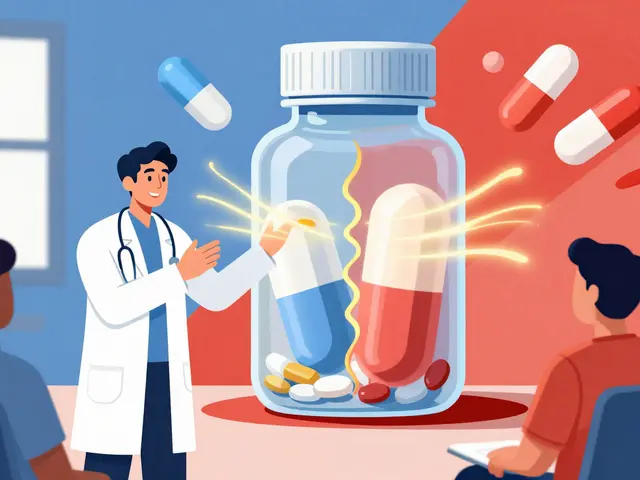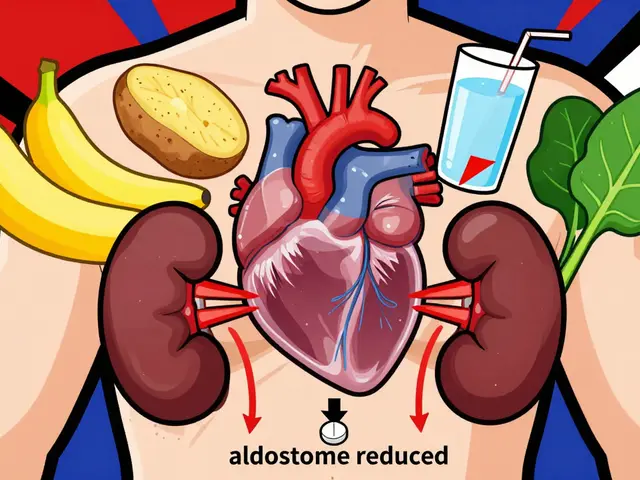
Introduction to Polyethylene Glycol 3350
As a blogger who is always keeping an eye on the latest developments in cancer treatment, I recently came across an interesting compound called Polyethylene Glycol 3350, or PEG 3350 for short. This compound has been used for various purposes, such as in the formulation of laxatives and as a drug delivery agent. But what caught my attention was the potential role it could play in cancer treatment. In this article, I will be discussing the potential of PEG 3350 in cancer treatment, its mechanisms of action, and the ongoing research on this promising compound.
Understanding the Mechanism of PEG 3350
To fully grasp the potential of PEG 3350 in cancer treatment, we need to understand how it works on a molecular level. PEG 3350 is a water-soluble polymer that has the ability to increase the solubility and stability of various drug molecules. This is especially important for cancer drugs, as many of them have poor solubility and stability in aqueous solutions, which can limit their effectiveness. By forming a protective layer around the drug molecule, PEG 3350 can help overcome these limitations and potentially improve the effectiveness of cancer treatments.
Enhancing Drug Delivery with PEG 3350
One of the main challenges in cancer treatment is delivering the drug to the tumor site without causing damage to healthy tissues. PEG 3350 can play a vital role in this regard, as it can help improve the bioavailability and circulation time of the drug in the body. This is achieved by attaching PEG 3350 to the drug molecule, a process known as PEGylation. PEGylated drugs have been shown to have improved pharmacokinetics, which means they can stay in the bloodstream longer and reach the tumor site more effectively. This can potentially lead to better outcomes in cancer treatment.
Reducing Side Effects and Improving Tolerability
Another important aspect of PEG 3350's potential in cancer treatment is its ability to reduce the side effects associated with certain cancer drugs. As I mentioned earlier, PEG 3350 can act as a protective barrier around the drug molecule, which can help reduce its interaction with healthy cells and tissues. This can lead to a decrease in side effects and improved tolerability of the treatment. Additionally, the improved pharmacokinetics of PEGylated drugs can also contribute to a reduction in dosage frequency, making the treatment more convenient for patients.
Current Applications of PEG 3350 in Cancer Treatment
There are already a few cancer drugs on the market that utilize PEG 3350 for improved drug delivery and reduced side effects. One example is PEG-asparaginase, which is used to treat acute lymphoblastic leukemia. PEG-asparaginase has been shown to have a longer half-life and reduced side effects compared to non-PEGylated asparaginase. Another example is PEG-interferon alfa-2b, which is used in the treatment of melanoma and other cancers. PEGylation has been shown to improve the circulation time and tolerability of interferon alfa-2b.
Ongoing Research and Future Directions
As promising as PEG 3350's potential in cancer treatment may be, there is still much research to be done to fully understand its capabilities and limitations. There are ongoing studies investigating the use of PEG 3350 in various cancer types and drug formulations. Some of the areas being explored include the development of PEGylated nanoparticles for targeted drug delivery, as well as the use of PEG 3350 in combination with other drug delivery strategies to further enhance the effectiveness of cancer treatments.
Challenges and Limitations of PEG 3350 in Cancer Treatment
While PEG 3350 offers numerous benefits in cancer treatment, there are also some challenges and limitations that need to be addressed. One concern is the potential for PEG 3350 to cause an immune response in some patients, which can lead to the development of anti-PEG antibodies. This can potentially limit the effectiveness of the PEGylated drug and cause adverse reactions. Additionally, the process of PEGylation can sometimes alter the activity of the drug molecule, which can impact its effectiveness. Further research is needed to overcome these challenges and optimize the use of PEG 3350 in cancer treatment.
Conclusion: The Potential of PEG 3350 in Cancer Treatment
In conclusion, Polyethylene Glycol 3350 is a versatile and promising compound with the potential to greatly improve the effectiveness, tolerability, and convenience of cancer treatments. Its ability to enhance drug delivery, reduce side effects, and improve pharmacokinetics makes it an attractive option for the development of new cancer therapies. While there are still challenges and limitations to be addressed, the ongoing research and current applications of PEG 3350 in cancer treatment provide a hopeful outlook for the future of cancer therapy.








8 Comments
Oh, look, another miracle polymer that’s going to magically cure cancer because, you know, we’ve never seen a "magic bullet" fail before. The idea that simply slapping a chain of ethylene glycol units onto a drug will solve all delivery problems is just adorable. Of course, the pharmaceutical industry will love to market this as a breakthrough while keeping the price sky‑high for patients. The moral high ground of “improving tolerability” sounds noble, but it conveniently hides the fact that we’re still feeding the same profit‑driven machine. PEGylation, as if we needed another buzzword to distract from the real issues of access and equity. Let’s not forget the wonderful side effect of anti‑PEG antibodies that can completely neutralize any benefit you claim. It’s astonishing how many papers parade the modest increase in half‑life as if it were a panacea, without addressing the immunogenicity concerns. And yet, the hype continues because the regulatory pathways are already paved for incremental tweaks, not radical change. One might argue that the scientific community is stuck in a loop of incrementalism, polishing the same old strategies while patients wait. Perhaps the next step is to market PEG‑3350 as a “lifestyle enhancer” for oncology clinics, because why settle for modest efficacy when you can have a glossy label? The whole narrative feels like a comfort blanket for those who refuse to confront the deeper systemic failures. The sarcasm is not lost on anyone who has read the dozens of “promising” preclinical studies that never reach the clinic. Meanwhile, the actual patients are left wondering if a polymer chain will ever replace a supportive care team. In short, the entire excitement around PEG‑3350 is a textbook example of the “more is better” fallacy that haunts modern medicine.
Thank you for shedding light on this promising avenue. The ability of PEG 3350 to increase solubility and extend circulation time is indeed valuable for many chemotherapeutics. Moreover, reducing systemic toxicity can greatly improve patient quality of life, which aligns with our goals for compassionate care. Continued investigation into antibody formation and optimal conjugation methods will be essential to maximize benefits. I look forward to seeing more clinical data supporting these advancements.
Just 2 quick points: PEGylation boosts stability and may lower dosing freq. Also, watch out for anti‑PEG antibodies.
It is incumbent upon the scientific elite to recognize that the physicochemical modulation imparted by polyethylene glycol 3350 transcends rudimentary solubilization; we are speaking of steric shielding, plasma protein adsorption attenuation, and the consequent augmentation of pharmacokinetic indices. The discourse surrounding PEGylated conjugates must incorporate the lexicon of polymer dynamics, surface charge heterogeneity, and the thermodynamic parameters governing nano‑biointeractions. One cannot merely laud the superficial prolongation of half‑life without interrogating the entropic penalties associated with conformational entropy loss upon grafting. Furthermore, the immunogenic epitopic presentation of PEG moieties mandates rigorous epitope mapping, lest we inadvertently precipitate neutralizing antibody cascades. In the realm of oncology, where therapeutic windows are narrow, the deployment of such macromolecular scaffolds necessitates a granular appreciation of biodistribution gradients and tumor microenvironment permeability. Only through such rigorous, jargon‑laden scrutiny can we elevate PEG 3350 from a mere excipient to a cornerstone of next‑generation oncologic pharmaceutics.
Wow, another "revolution" 🙄🔥💥
The data presented in many of these studies is often selective. Researchers tend to highlight median improvements. The reality is that variability in patient response is huge. Many trials fail to report the outliers. This omission skews the perceived efficacy of PEGylation. Moreover, the cost increment associated with polymer conjugation cannot be ignored. Health systems will bear the burden. The short‑term gains may not offset long‑term economic strain. A critical appraisal is therefore essential.
Only the "best" for our nation 🇺🇸💪
I’m hopeful this research brings real relief to people worldwide.